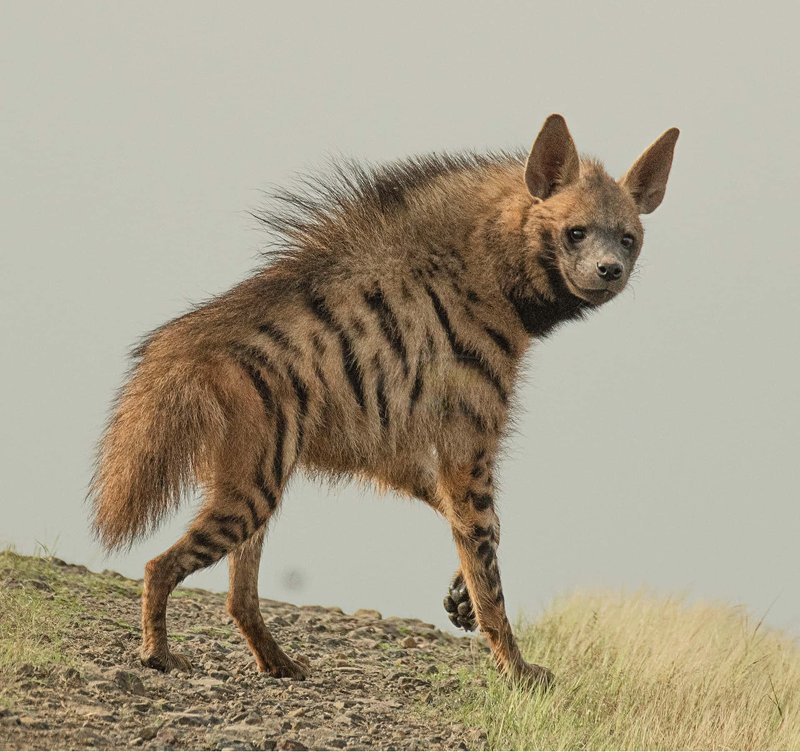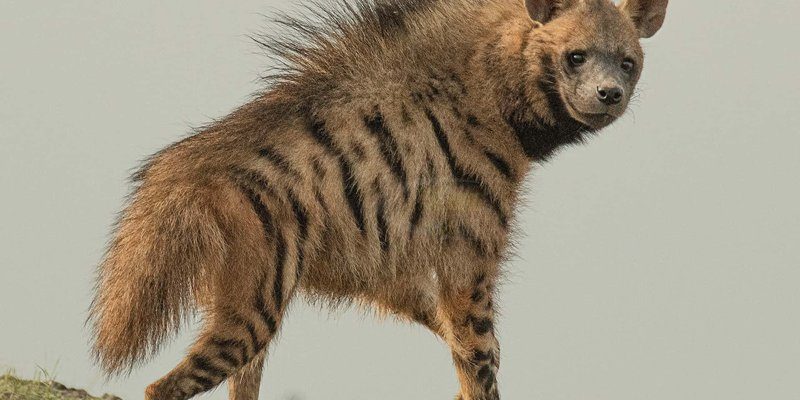
Brown hyenas thrive in the arid regions of southern Africa, particularly in places like the Kalahari and Namib deserts. They have developed a range of strategies to cope with their challenging habitat. Understanding how they manage to adapt and endure can inspire us and remind us of nature’s incredible resilience. So, let’s dive into the fascinating world of brown hyenas and see what makes them so special.
Adaptations to a Harsh Climate
Surviving in extreme environments isn’t just about luck; it’s about adaptation. Brown hyenas have evolved several physical and behavioral traits that help them navigate the challenges of arid landscapes. For starters, their thick, shaggy fur isn’t just for show—it helps them retain moisture, crucial for survival in such dry conditions. This insulation also protects them from the baking heat of the sun during the day.
Additionally, their bodies are built for endurance rather than speed. Brown hyenas have a slim build and long legs, which allow them to cover vast distances in search of food and water. This energy-efficient design is essential since they often travel up to 20 miles a day to find a meal. Picture them trotting through the desert, their keen noses sniffing out scraps left behind by larger predators. It’s a tough life, but they make it work.
Dietary Habits and Foraging Strategies
When it comes to food, brown hyenas are opportunistic scavengers. This means they primarily feed on what they can find rather than hunting prey, which can be risky. They often scavenge the remains of animals hunted by larger carnivores like lions or leopards. This scavenging lifestyle is a smart move in harsh environments where hunting can be energy-intensive.
What’s fascinating is their ability to consume a wide variety of foods. Brown hyenas aren’t picky eaters—they’ll munch on everything from carrion to fruit and insects. Their strong jaws and teeth allow them to process tough materials like bones, which other animals might leave behind. Imagine breaking into an old, dried bone to get to the nutrient-rich marrow inside. It’s a resourceful strategy that maximizes their chances of survival.
Social Structure and Communication
Now, let’s talk about their social lives. Brown hyenas have a unique social structure that aids in their survival. They usually live in small family groups, which can consist of a mother and her offspring or a few adults. This close-knit community helps them cooperate when foraging for food, providing a safety net in a dangerous environment.
Communication is vital in such groups. Brown hyenas use a mix of vocalizations, body language, and scent marking to stay connected. For example, they make distinctive whoops and grunts to signal their presence to other members. Think of it as a group of friends texting each other to keep in the loop about where to meet for dinner. In the wild, this communication ensures that everyone knows where to find food and when to be alert for potential threats.
Water Conservation Techniques
Water is one of the most precious resources in the brown hyena’s habitat. They’ve developed some intriguing methods for conserving water that might surprise you. For one, they can survive for days, sometimes even weeks, without drinking water directly. Instead, they get most of their moisture from the food they consume, like the juicy remains of freshly killed animals.
Additionally, brown hyenas are skilled at seeking out hidden sources of water. They’ve been known to dig holes to access underground water or to scavenge water from other animals. This instinct for finding hydration in inhospitable environments is critical for their survival. Imagine being so thirsty that you have to dig to get a sip of water—it’s a tough but necessary tactic.
Behavior During Extreme Conditions
Harsh environments often bring extreme weather, which can be challenging for any creature. Brown hyenas have their strategies for coping with severe heat or harsh storms. During the hottest parts of the day, you’ll find them resting in burrows or under the shade of rocks and trees. This behavior helps them avoid the risk of overheating and conserves energy for when the temperatures drop.
In colder conditions, they adapt by huddling together for warmth. Just like we might curl up with family or friends to stay cozy on a chilly night, brown hyenas use their social bonds to keep warm. This flexibility demonstrates their resilience and ability to rely on one another in tough times.
Threats and Conservation Efforts
Despite their impressive adaptations, brown hyenas face threats that can jeopardize their survival. Habitat loss and human encroachment are significant issues, as their natural environments shrink due to agriculture and urban development. Additionally, they are often viewed as pests by some farmers, leading to persecution.
Conservation efforts are critical to ensuring the future of brown hyenas. Organizations are working to protect their habitats and raise awareness about their ecological role. Educating local communities on the importance of these creatures can help change perceptions. When we understand how vital they are to their ecosystems, it’s easier to appreciate their role in maintaining a balance in nature.
Why Brown Hyenas Matter
Understanding how brown hyenas survive in harsh environments offers us a glimpse into the resilience of nature. They teach us valuable lessons about adaptation, resourcefulness, and community. Each of their unique characteristics highlights the incredible diversity of life on our planet. By protecting brown hyenas, we’re not just safeguarding a species; we’re also preserving the intricate web of life that depends on them.
In a world often filled with challenges, the brown hyena stands as a testament to survival against the odds. Their story reminds us of nature’s beauty and the importance of respecting ecosystems. So, the next time you think about resilience, remember the brown hyena and its tenacity in the face of adversity. They may not be the most glamorous animals, but they sure are inspiring.

